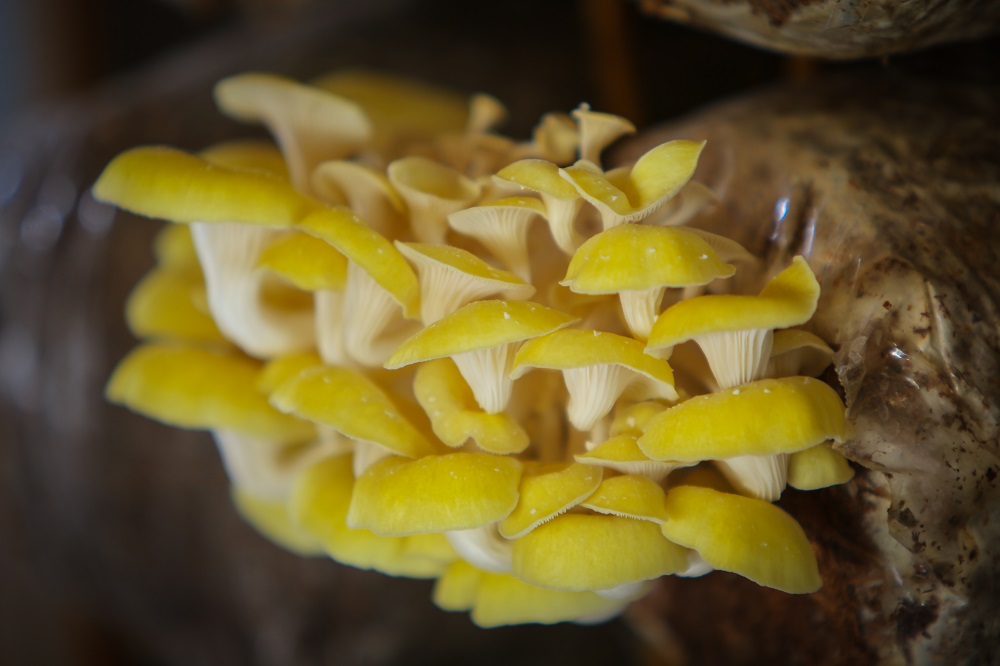The golden oyster mushroom (Pleurotus citrinopileatus), shown here growing on rice straw medium at the Philippine Rice Research Institute‘s mushroom center, is an edible fungus native to subtropical regions of Asia.
The mushroom is prized being nutritious with high amounts of iron, zinc, potassium, phosphorus, selenium, calcium, and folic acid. It is also packed with vitamins B1, B3, B5, B12, C, and D and a good source of protein and fiber.
The golden oyster (or yellow oyster) is said to have medicinal properties. Studies have shown that they contain anti-oxidants and suggest that it may help lower cholesterol levels and prevent certain types of cancer.
There are many types of edible mushrooms that grow well on compost made from rice straw and can be a profitable cash crop for small rice farmers.
One, in particular, the rice-straw mushroom (Volvariella volvacea), has received a lot of attention in Vietnam where many institutions have conducted research to optimally produce it using rice straw as a growing medium. Rice-straw mushrooms have become so popular in Vietnam that it has increased the value of rice straw which is the waste by-product of rice farming. Thus, mushroom culture can be a part of sustainable rice straw management instead of the traditional practice of burning it.
In Sustainable Rice Straw Management, Hung Van Nguyen, a mechanization and rice by-product scientist at the International Rice Research Institute (IRRI), discusses the potential of rice-straw mushroom for poverty alleviation for rice farmers in Vietnam, the Philippines, and Cambodia.
It has low production costs and can grow well outdoors and indoors, according to Dr. Hung.
Rice-straw mushrooms can also be harvested in approximately one and a half months.
For more information on repurposing rice straw for growing mushrooms and other uses:






